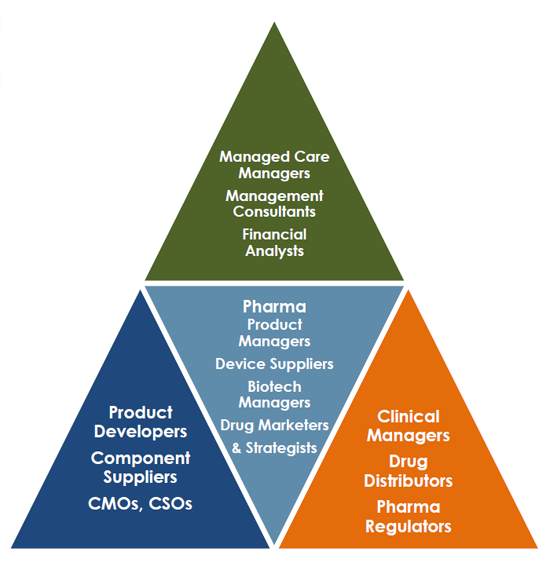 |
市場調查報告書
商品編碼
1718479
吸入型中樞神經系統治療藥市場:產品,市場,策略,預測,標的Inhaled CNS Therapeutics - Products, Markets, Therapeutics, Strategies & Forecasts |
||||||
這項新的市場研究吸入式中樞神經系統治療市場:產品、市場、策略、預測、目標對推動藥物傳輸領域這一成長領域的技術、產品和參與者進行了全面的評估和分析。本報告旨在讓製藥決策者、藥物開發商和配方師、藥物設備設計師和產業策略家詳細了解吸入式中樞神經系統治療對製藥策略和醫療保健治療方案日益增長的影響。它對醫療保健業務經理、醫療保健管理員和投資者也將很有用。
成長動力
向中樞神經系統注射藥物面臨獨特的挑戰。然而,藥物開發商和研究人員發現,透過吸入方式輸送中樞神經系統藥物可以緩解其中的一些問題。鼻子易於進入且血管豐富,使其成為將小分子藥物和生物製劑穿過血腦屏障輸送到中樞神經系統的有吸引力的途徑。深肺給藥可能具有良好的藥物動力學特性。與口服藥物相比,吸入給藥還可以提供更快的起效速度,且所需的給藥頻率更低。這些潛在的益處促進了針對多種疾病的吸入式中樞神經系統藥物的開發。隨著人口老化和管理式醫療計劃促使家庭醫療保健和藥物自我管理的擴大,吸入藥物越來越被視為對患者友好且具有成本效益的藥物。我們的分析表明,吸入式中樞神經系統傳輸非常適合利用這些趨勢,並將發展成為未來中樞神經系統治療藥物開發和商業化的關鍵組成部分。
報告的價值矩陣

您將學到什麼
- 哪些吸入藥物以粉末形式供應,它們如何分發,有哪些設備,以及誰在分發它們?
- 哪些可吸入乾粉藥物處於後期開發階段,誰在開發這些藥物,以及它們針對哪些適應症?
- 推動吸入乾粉藥物/設備需求的關鍵因素有哪些?
- 目前的市場規模是多少,誰是市佔率領先者,以及到 2026 年他們的市佔率將會是多少?
- 藥品開發商和設備製造商之間的關係有多重要?該行業的主要聯盟有哪些?
- 乾粉吸入產品的關鍵設計因素、技術和市場發展挑戰是什麼?
- 影響乾粉吸入器市場的關鍵經濟、技術和監管因素有哪些?
調查方法:
該研究方法以對主要市場參與者、技術開發商、分銷商、行業專家和市場影響者(包括監管機構、行業協會和材料標準機構)進行深入訪談的形式進行初步研究。
根據行業期刊文章、技術文獻、行業出版物、公司數據表和公開聲明以及政府機構和行業協會的統計數據等二手資料來源對主要資訊進行評估和標準化。
使用標準建模和統計技術可以估計和預測市場需求和未來市場活動。
目錄
- 摘要整理
- 藥物傳輸市場動態
- 自我控制的趨勢
- 中樞神經系統藥物市場動態
- 家庭醫療保健的成長
- 市場推動因素
- 市場策略
- 吸入藥物的主要因素
- 吸收
- 生物利用度
- 設備設計參數
- 鼻內給藥的藥物動力學
- 鼻腔裝置特點
- 肺部給藥的藥物動力學
- 肺裝置特性
- 乾膜技術
- 吸入中樞神經系統藥物:FDA 核准的產品
- 憂鬱症
- 艾氯胺酮(Spravato);楊森製藥
- 偏頭痛
- 二氫麥角胺甲磺酸鹽
- 舒馬曲坦(Imitrex)
- 佐米曲坦(Zomig)
- 疼痛管理
- 布托啡諾
- 酮洛酸(Sprix)/Zyla Life Sciences
- 芬太尼/Lazanda
- Adasbe/洛沙平(Galen/美國)
- 癲癇發作
- 地西泮(Valtoco)
- 帕金森氏症
- 左旋多巴(Inbrija)
- 癲癇發作
- 尼迪拉姆(咪達唑侖)
- 吸入式中樞神經系統市場細分分析
- 阿茲海默症和癡呆症
- 憂鬱症
- 失眠
- 偏頭痛
- 疼痛管理
- 帕金森氏症
- 精神分裂症
- 癲癇發作
- 市場因素
- FDA 法規
- 臨床試驗
This new market study, "Inhaled CNS Therapeutics: Products, Markets, Strategies, Forecasts, & Targets" is a comprehensive evaluation and analysis of the technology, products and participants providing the driving force behind this growing segment of the drug delivery sector. The report has been designed and developed to provide pharmaceutical company decision makers, drug developers and formulators, drug device designers, and industry strategists with a detailed understanding of the expanding impact of inhaled CNS therapies on pharmaceutical strategies and healthcare treatment protocols. Provider organization business managers, healthcare administrators and investors will also benefit from this publication.
Converging Factors Driving Advances
Delivering drugs to the central nervous system presents unique challenges. But, drug developers and researchers have discovered that delivering CNS therapeutic drugs via inhalation mitigates several of these issues. The accessibility and vascular structure of the nose make it an attractive route for delivering both small molecule drugs and biologics across the blood-brain barrier to the CNS. Pulmonary delivery to the deep lung can have favorable pharmacokinetics. And inhaled delivery offers the potential for faster onset of action and less frequent dosing relative to oral drugs. These potential advantages have spurred activity in inhaled CNS therapeutics for a range of disorders. As aging population demographics and managed care initiatives drive growth in home health care and self-administration of drug therapies, inhaled medicine is increasingly being viewed as patient-friendly and cost-effective. Our analysis indicated that inhaled CNS administration is well positioned to take advantage of these trends and evolve into a significant factor in the future of pharmaceutical development and commercialization of CNS therapeutic drugs.
Report Value Matrix

What You Will Learn:
- What inhalable drugs are supplied in powder form, how are they marketed, what are the device specifics, and who markets them?
- What inhalable dry powder drugs are in late stage development, who are the developers, and what indications are they targeting?
- What are the major factors driving inhaled dry powder drug/device demand?
- What is the size of the market today, who are the market share leaders, and what will the market share be in 2026?
- How important are drug developer-device manufacturer relationships and what are the key alliances in the industry?
- What are the essential design factors, technologies and market development issues for dry powder inhalation products?
- What are the significant economic, technology, and regulatory factors affecting the market for dry powder inhalers?
Methodology:
Research methodology is based on primary research in the form of in-depth interviews with key market participants, technology developers, distributors, industry experts, and market influencers, a list that includes regulatory officials, industry trade groups, and materials standards organizations.
Primary data is evaluated and normalized against secondary sources including trade journal articles, technical literature, industry publications, company data sheets and published information, and statistical data from government agencies and trade associations.
Forecasts and projections of market demand and future market activity are derived using standard modeling and statistical techniques.
Table of Contents
- Executive Summary
- Drug Delivery Market Dynamics
- The Trend toward Self-Administration
- CNS Therapeutic Market Dynamics
- Growth in Home Healthcare
- Market Drivers
- Market Strategies
- Key Inhaled Drug Factors
- Absorption
- Bioavailability
- Device Design Parameters
- Nasal Delivery Pharmacokinetics
- Nasal Device Characteristics
- Pulmonary Delivery Pharmacokinetics
- Pulmonary Device Characteristics
- Dry Film Technology
- Inhaled CNS Drugs: FDA-Approved Products
- Depression
- Esketamine (Spravato); Janssen Pharmaceuticals
- Migraine
- Dihydroergotamine Mesylate
- Sumatriptan (Imitrex)
- Zolmitriptan (Zomig)
- Pain Management
- Butorphanol
- Ketorolac (Sprix)/ Zyla Life Sciences US
- Fentanyl / Lazanda
- Adasuve/Loxapine (Galen / US)
- Seizures
- Diazepam (Valtoco)
- Parkinson's Disease
- Levodopa (Inbrija)
- Seizures
- Nayzilam (Midazolam)
- Inhaled CNS Market Segment Analysis
- Alzheimer's and Dementia
- Depression
- Insomnia
- Migraine
- Pain Management
- Parkinson's Disease
- Schizophrenia
- Seizures
- Market Factors
- FDA Regulations
- Clinical Trials











